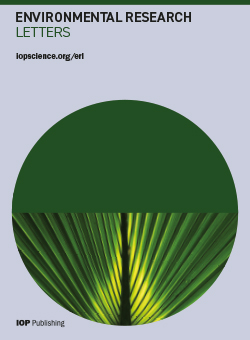美国货运卡车电气化的健康、气候和公平效益
IF 5.6
2区 环境科学与生态学
Q1 ENVIRONMENTAL SCIENCES
引用次数: 0
摘要
美国的长途货运主要依靠柴油卡车,其温室气体排放量占美国总排放量的 3%,在当地空气污染中也占有相当大的比例。在此,我们比较了电动和柴油长途运输卡车车队对气候和空气污染造成的健康损害。我们使用卡车商品流来估算柴油卡车的尾气排放,并使用区域电网排放强度来估算电动卡车在各种电网情况下的充电排放。我们使用复杂性降低的空气质量模型,结合与空气污染相关的过早死亡估值(使用两个危险比 (HR)),并量化了不同情景下的分布式健康影响。我们发现,当前柴油车队的年度健康和气候成本为 195 美元-249 美元/人,而新柴油车队的年度健康和气候成本为 174 美元-205 美元/人,电动车队的年度健康和气候成本为 156 美元-177 美元/人,具体取决于危险比率。我们发现,与新柴油车队相比,货运电气化每年可避免 60 亿至 85 亿美元的健康和气候损失(与现有柴油车队相比,收益更高)。然而,中西部和墨西哥湾沿岸的部分地区将因车辆使用煤电厂的电力充电而增加健康损害。如果用零排放发电取代老旧的煤电厂(运行于 1980 年或更早),美国所有货运的电气化每年将避免 323 亿至 392 亿美元的损失,并在全美范围内带来健康效益。制造业消费品(包括电子产品、运输设备和精密仪器)以及食品、饮料和烟草产品的运输电气化将带来最大的绝对健康和气候效益,而混合货运和制造业产品将带来最大的每吨公里效益。我们发现,不同种族和收入的人在健康损害方面的差异很小。这些结果将有助于政策制定者优先考虑货运子行业的电气化和充电投资战略。本文章由计算机程序翻译,如有差异,请以英文原文为准。
The health, climate, and equity benefits of freight truck electrification in the United States
Long-haul freight shipment in the United States relies on diesel trucks and constitutes ∼3% of U.S. greenhouse gas emissions and a significant share of local air pollution. Here, we compare the climate and air pollution-related health damages from electric versus diesel long-haul truck fleets. We use truck commodity flows to estimate tailpipe emissions from diesel trucks and regional grid emissions intensities to estimate charging emissions from electric trucks under various grid scenarios. We use a reduced complexity air quality model combined with valuation of air pollution-related premature deaths (using two hazard ratios (HRs)) and quantify the distributional health impacts in different scenarios. We find that annual health and climate costs of the current diesel fleet are $195–$249/capita compared to $174–$205/capita for a new diesel fleet, and $156–$177/capita for an electric fleet, depending on the HR. We find that freight electrification could avoid $6.2–8.5 billion in health and climate damages annually when compared to a fleet of new diesel vehicles (with even higher benefits when compared to the current diesel fleet). However, the Midwest and parts of the Gulf Coast would experience an increase in health damages due to vehicles charging using electricity from coal power plants. If old coal power plants (operating in 1980 or earlier) are replaced with zero-emission generation, electrification of all U.S. freight would result in $32.3–39.2 billion in avoided damages annually and health benefits throughout the U.S. Electrifying transport of consumer manufacturing goods (including electronics, transport equipment, and precision instruments) and food, beverage, and tobacco products would provide the largest absolute health and climate benefits, whereas mixed freight and manufacturing goods would result in the largest benefits per tonne-km. We find small variations in health damages across race and income. These results will help policymakers prioritize electrification and charging investment strategies for the freight transportation sub-sector.
求助全文
通过发布文献求助,成功后即可免费获取论文全文。
去求助
来源期刊

Environmental Research Letters
环境科学-环境科学
CiteScore
11.90
自引率
4.50%
发文量
763
审稿时长
4.3 months
期刊介绍:
Environmental Research Letters (ERL) is a high-impact, open-access journal intended to be the meeting place of the research and policy communities concerned with environmental change and management.
The journal''s coverage reflects the increasingly interdisciplinary nature of environmental science, recognizing the wide-ranging contributions to the development of methods, tools and evaluation strategies relevant to the field. Submissions from across all components of the Earth system, i.e. land, atmosphere, cryosphere, biosphere and hydrosphere, and exchanges between these components are welcome.
 求助内容:
求助内容: 应助结果提醒方式:
应助结果提醒方式:


